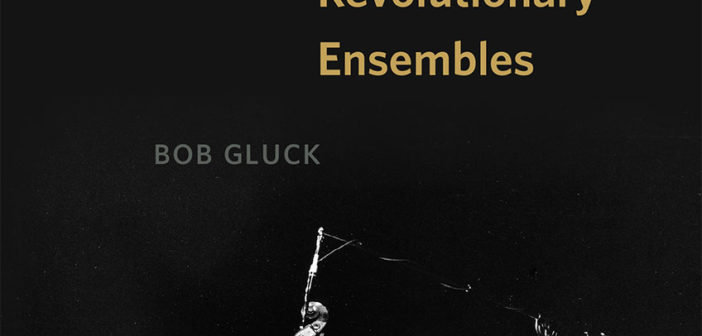There are lots of books out there blindly extolling the genius of Miles Davis. Not in the least his autobiography. This is not that. Gluck, a pianist, composer, jazz historian, rabbi and professor of music at the State University of New York, and author of You Know When You’ll Get There: Herbie Hancock and the Mwandishi Band (you can read our review here), instead places Davis’ work and approach within the context of his contempories. Perhaps what makes this book so fascinating that he doesn’t elevate Davis above his contempories, or even the other ensembles that his former band members created. Instead he compares and contrasts, analysing the leadership, compositional approach and role of the instruments in each ensemble. He notes Davis’ celebrity allowed him to create semi improvised music to the masses playing rock festivals, whereas economic constraints hampered many of colleagues confining them to lofts and the college circuit.
The Lost Quintet is Miles’ first electric band featuring Wayne Shorter (tenor saxophone), Chick Corea (electric piano), Dave Holland (bass), and Jack DeJohnette (drums). They never recorded a studio album together but played together between 1965-68 and were integral to Miles creative development. Gluck describes his development during this time as the ‘third way’, one foot in the past and inherited forms, and another in new forms. Whilst his band embraced spontaneous improvisation, he wasn’t ready to relinquish the song form. This is the band that paved the way for In A Silent Way, Bitches Brew, and On The Corner, yet also fusion outfits such as Return to Forever as his bandmates splintered off into their own directions.
You wouldn’t call this book Miles centric. Each band member gets discussed, with Gluck analysing their approach and role in the band, and also interviews they conducted in the press at the time. At times it feels like Gluck is assembling a jigsaw. In particular though he notes the real chemistry that developed between Corea and DeJohnette that would ultimately see them depart to form their own band – wanting to push free improvisation even further.
Gluck dissects the work of the Lost Quintet via some recently discovered live recordings, noting the evolution of songs over time, some that would later appear on Bitches Brew, such as Miles Runs the Voodoo Down. He also contrasts their live, increasingly abstract performances with Miles producer Teo Macero’s post production techniques, with songs constructed via editing and looping, even on live albums. He views Miles as a non-directive leader, allowing his collaborators plenty of space, only periodically stepping in when things had gotten too self-indulgent.
Yet even as Miles Davis expanded, moving into jazz funk and jazz rock, his personnel were all keenly aware of what was occurring around them, and in particular more experimental and free music. He discusses 24 hour a day free jazz jam sessions in David Liebemans loft, Ornette Coleman’s space and the trajectory of some of the more experimental ensembles such as the leaderless improvisation that Corea, DeJohnette and developed in Circle.
He traces the free-jazz trio Revolutionary Ensemble, who though only active between 1971 and 1977 were leaders in spontaneous music. Gluck called their approach ‘parallel play’, with three individuals pursuing their own direction, yet contributing to the group dynamic via ‘combined energy level, texture and a sense of shared purpose.’ These guys played together for the sheer joy of playing, unable to build an audience and create a financial platform to maintain their existence.
Gluck’s comparisons raise complex issues, like the hierarchy of the jazz economy, perhaps best voiced by bassist William Parker who suggests that “ before the 1970’s if you played with well known artists there was no guarantee, unless it was Miles Davis or that crowd, that you were going to step up.” Corporate interest followed Miles (and still does). That said the likes of Anthony Braxton, The Art Ensemble of Chicago and ultimately Ornette Coleman did manage to find a niche within the jazz economy whilst still creating spontaneous cutting edge music.
Between these kinds of philosophical and contextual discussions Gluck spends a chapter (admittedly an appendix) comparing Miles Davis Live at the Filmore East recordings. In 2014 the unedited recordings were released, finally allowing us the opportunity to hear the live performance as it was created, freed from Macero’s commercial leaning editing. For mine, Gluck’s analysis of the music (often track by track) with a trainspotters relish is the least interesting aspect of this book. Gluck delights in demonstrating various aspects of performances in some detail as evidence to his arguments, when a simple statement would probably do.
Gluck’s non-judgmental approach to the various ensembles is refreshing. Davis had commercial acclaim and backing that his contempories lacked. This allowed him to do more, and still remain financially solvent. The likes of Circle and the Revolutionary did not enjoy this kind of backing, yet to some extent this freed them to pursue their muse, not having to consider commercial constraints. These comparisons allow us to view the Miles electric period in a new light, yet also recognise – possibly for the first time some of the innovative ensembles that were happening around him.




